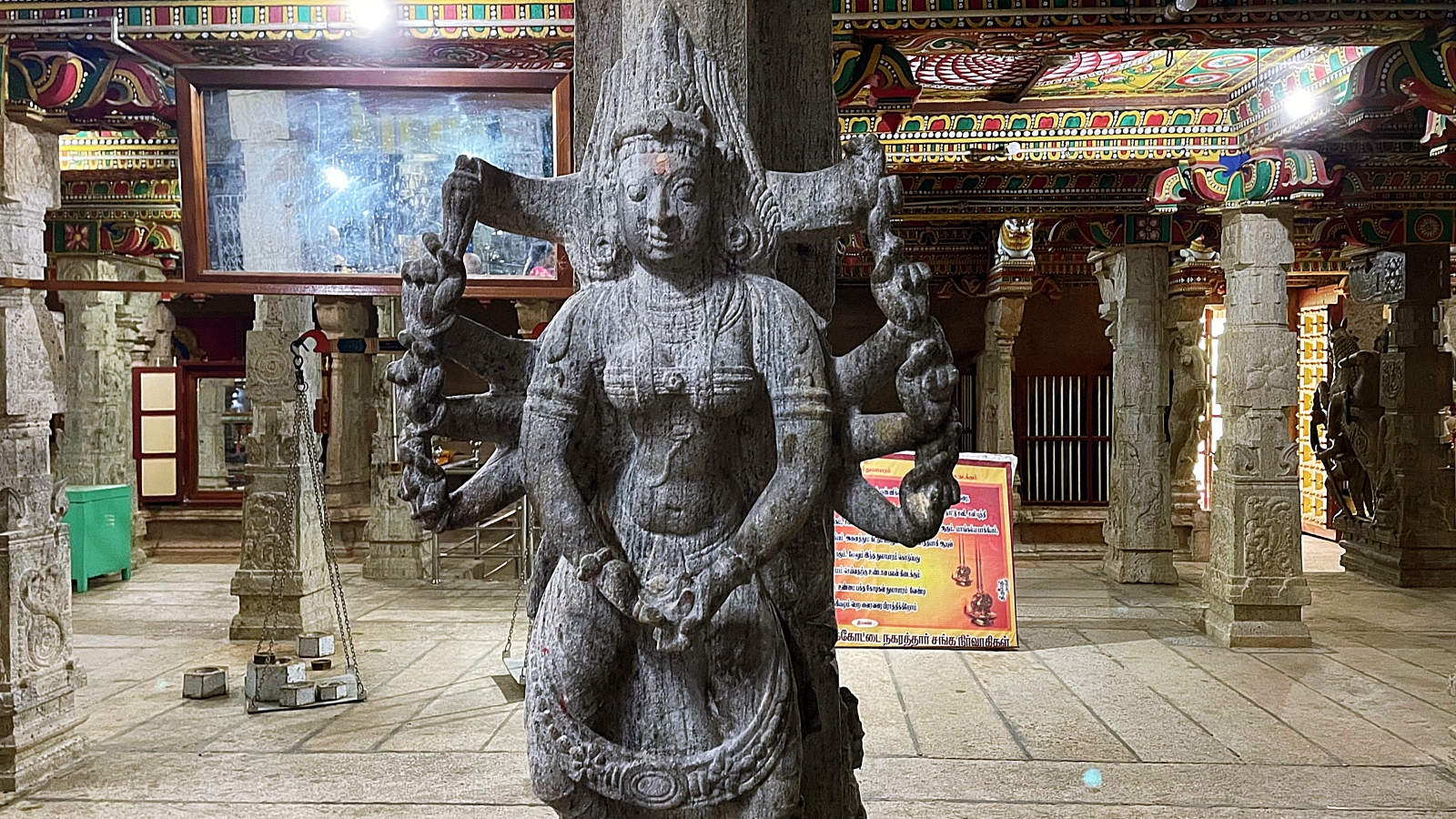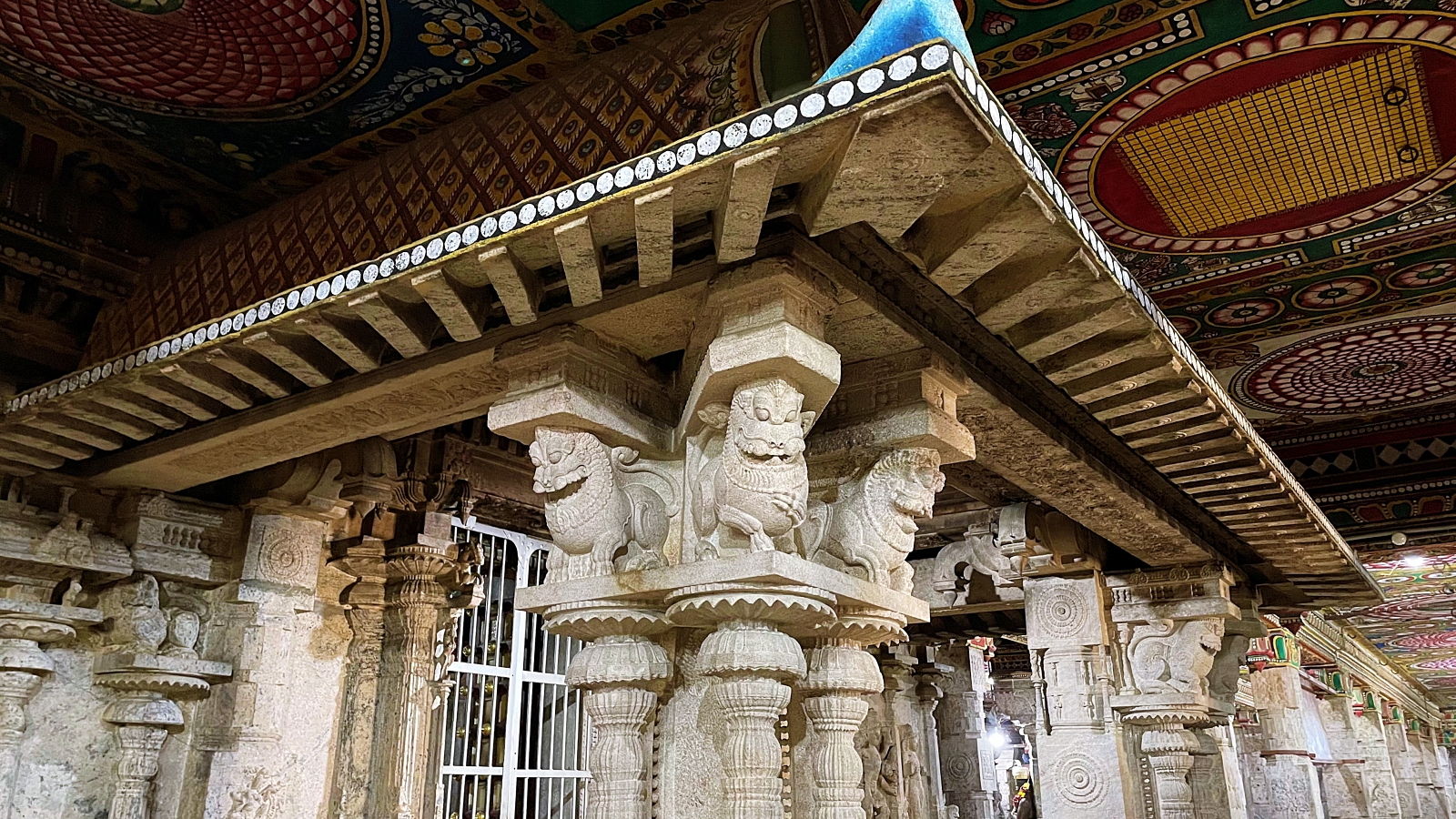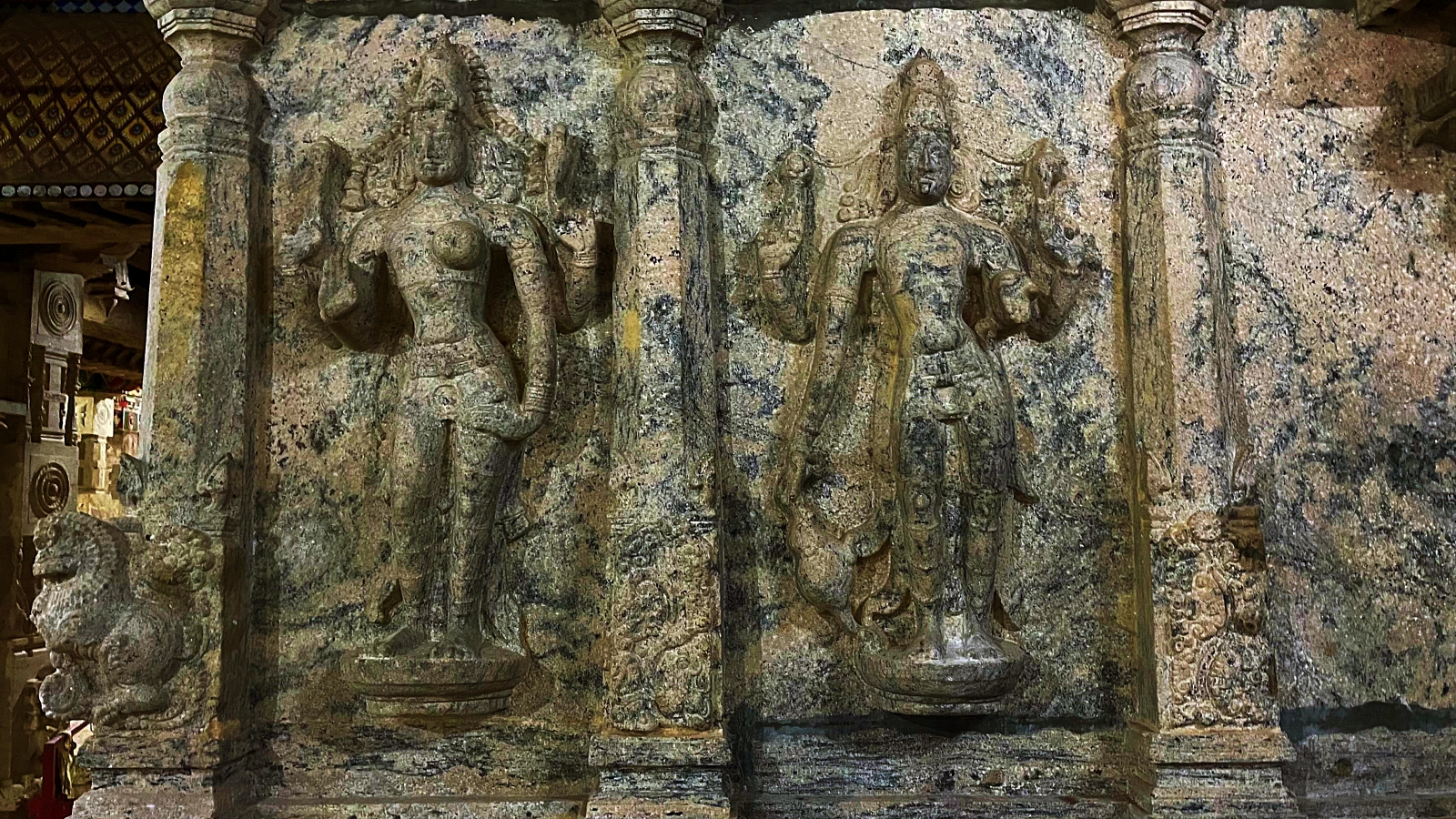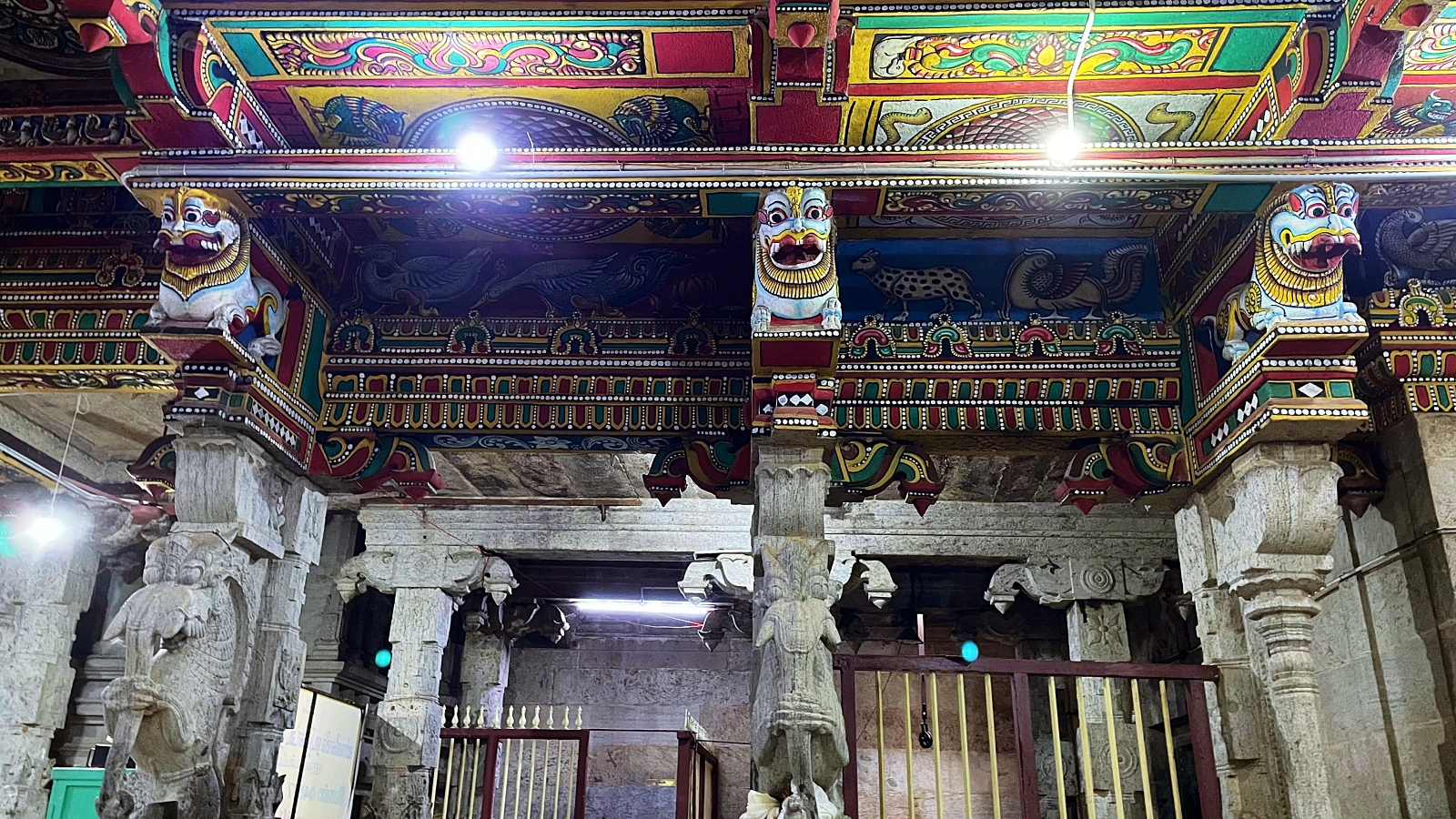The Nine Clan Temples of the Chettiar Community
Chettiars, also known as the Nagarathar community, revered Lord Vishnu and built numerous temples, including nine clan temples.
In this ancient land of the Chettinad region in Tamil Nadu, 96 settlements that once thrived, are intricately linked to their respective clan temples. These sacred places held sway over their distinct set of rules, and as religious practices formed the very backbone of the people’s lives, the temple administration assumed a pivotal role in fostering communities. Within each settlement, a temple stood as a beacon of faith and governance, orchestrating the intricate dance of town planning.

“Individuals within the same clan temple, are regarded as kin, akin to siblings. Consequently, the sacred bond of matrimony can only be forged between those hailing from distinct temple clans,” says Shiva Shankar, local guide, CGH Visalam.

The Pandya kings constructed nine clan temples in the Chettinad region, which became the epicentre of numerous villages and townships. These sacred landscapes, including Soorakudi, Velankudi, Illupaikudi, Iraniyur, Nemam Kovil, Vairavan Kovil, Illaiyathangudi, Mathur, and Pillaiyarpatti, are a testament to the grandeur and legacy of the Pandya dynasty. These names, though they may roll off the tongue with a certain grandeur, merely hint at the magnificence that awaits within. Lord Shiva reigns supreme in all these nine clan temples.
Table of Contents
Soorakudi Temple
Soorakudi, formerly known as Desikanathapuram, is a five-tier 8th-century temple that houses the revered deity Desikanathar, an alternate manifestation of Lord Shiva, and his consort, Avudainayaki, also known as Goddess Parvathi who is depicted with three eyes and four pairs of hands, symbolizing her wisdom and insight. The temple features two gopurams, ten vimanas, and a serene pond. It also features an intriguing portrayal of Bhairava, an alternate form of Shiva, wielding a club instead of a trident.
Velankudi Temple
Out of the nine clan temples, Velankudi takes the crown for being the smallest. Velankudi got its name from the bountiful ‘Vela’ trees that flourish in this neck of the woods. The temple goes by the fancy name of Velangudi Kandeswarar Kamatchiammai Kovil. Inside this divine abode, you’ll find an intricately carved ‘Gopuram’ and countless sculptures that will leave you spellbound. The deities here are Sandeeswarar, also known as Lord Shiva, and his better half, the lovely Kamakashi Ammai, or Goddess Parvati.
Illupaikudi Temple
Illupaikudi, also known as the Thandthondeeswarar Temple, derives its name from the revered deity it houses, Lord Thondriyeesar. Legend has it that within these sacred walls, an alchemist once possessed the extraordinary ability to transmute iron into gold, radiating with a unique luminosity. Injecting a touch of wit, he beseeched Lord Shiva to bestow upon him the prowess to make superior gold.
In a whimsical twist of fate, the Almighty himself materialized, bestowing upon him the extraordinary desire to vanish into a Lingam, which promptly transformed into a resplendent golden hue, radiating its luminosity far and wide. Thus, the moniker “shining gold” was born, encapsulating this phenomenon. In this divine abode, lord Shiva is adorned not with skulls, but with an ever-filling Akshay Patra, a mystical pot. Legend has it that this vessel guarantees the eternal fulfilment of one’s fundamental desires.
Iraniyur Temple
Lord Vishnu assumed the guise of Narasimha and triumphed over Hiranyakashipu, who failed to acknowledge Vishnu’s supreme power, despite the righteous teachings of his son, Prahlada. Consequently, Vishnu found himself burdened with the unfortunate consequence of having committed a killing. To absolve himself of this dosham, he sought solace in worshipping Siva at this very place. The place is called Iraniyur, derived from the name Hiranya, which is the first part of Hiranyakashipu’s name.
Lord Shiva is known as Narasimheswarar here, as he was worshipped by Narasimhar, whereas Parvati, Goddess Sivapuramdevi. This temple holds a prestigious position among the eight locations where the mighty ashta-Bhairavar emerged. Kala Bhairavar is revered with utmost devotion at this sacred site, and according to Puranas, even Kubera and Vayu have paid their respects at this temple.
Nemam Kovil
While the rest of the clan temples owe their existence to the Pandya Kings, this one stands out as a testament to the architectural prowess of the Chola dynasty. Lord Jayamkonda Soleeswarar, the embodiment of Shiva’s fierce form commands reverence within the sacred walls of this temple. Legend has it that when Shiva opened his third eye, the world trembled in fear and anticipation, radiating an aura of unparalleled power and authority.
The temple’s main deities are Jayang Konda Soleeswar and the goddess Soundara Nayaki. Nemam Kovil features extraordinary sculptural masterpieces, including Lord Ganesha’s head fused with a female body and a lion’s leg harmoniously united with a bullock. Chola Teertham, the temple tank, exudes an aura of auspiciousness, and legend has it that a dip in its sacred waters and offering garlands to the revered deities guarantees the fulfilment of one’s heartfelt desires.
Vairavan Kovil
Vairavan Kovil, located 10 km from Karaikudi, is a 1200-year-old temple in the Chettiar clan. It is a place where believers seek blessings from Lord Saneeswara and Devi Kamakshi Ammai. The temple features sculpted images of various gods and goddesses, as well as seven note pillars hewn from stone. Legend has it that Lord Brahma, with his five heads rivalling Lord Shiva, was conceited. Parvati mistakenly offered her services to Brahma, believing he was her beloved Shiva.

Unbeknownst to her, Brahma accepted, basking in his vanity. When Parvati discovered her mistake, she complained to Lord Shiva, who summoned Bhairava to teach Brahma a lesson. Bhairava severed one of Brahma’s heads, leaving him forever marked by his arrogance. Behind the Vairavan Kovil lies the colossal temple pond, known as the Vairavar (or Bhairava) Theertham.
Illaiyathangudi Temple
The temple, dating back to the 7th century, was built to protect the devas from the Asuras’ power. Legend has it that a fierce battle raged between the devas and the asuras, and they sought refuge at this site to soothe their minds. They erected a Siva Lingam from the golden sand and worshipped it, claiming that Siva, the mighty deity, lent them strength to conquer the Asuras. In the Tamil language, ilaippu signifies weariness, aattram represents solace, and kudi refers to any dwelling place of people.
The moolavar Lingam present in this temple is not the original one. It was transported from Thanjavur, and ceremoniously placed within the confines of this temple. Right at the entrance of the temple, you’ll find shrines dedicated to Shiva and Parvati, going by the names of Arasa Mangalanathar and Mangaleswari, respectively. The temple’s gopuram showcases exquisite stucco art, portraying captivating scenes from Vishnu’s Dasavataram. This architectural marvel serves as a prarthana sthalam, a sacred place for those yearning to tie the knot.
Mathoor Temple
Vaippu Sthalam in the Tevaram is connected to the Thanthondreeswarar temple in Iluppaikudi. The site was originally called Veerapandiapuram, possibly named after Pandya king Veera Pandyan. Legend has it that Kongana Siddhar aimed to master alchemy by converting iron to gold using a herbal mix. Lord Siva, who appeared when Siddhar reached 500 gold tablets, is called Ainootreswarar. The 9 Nagarathar temples have only parivara devatas installed, except at Ilayathangudi and Mathur, where guardian deity Ananda Muneeswarar is present. The 12th century CE structural temple features a Tevaram Vaippu Sthalam core, tall dhwajasthambam, bali peetham, and Nandi mandapam.
The grand pillared mandapam gracefully concludes at the ardha mandapam, boasting a meticulously crafted outer wall and mandapam. The shrine for Periya Nayaki Amman is located on the right, flanked by two Dwara Saktis. The prakaram is spectacular, with pillars lining the perimeter. The temple’s architecture features lions, with the Nandi seated on a pedestal resting on lions.
Pillaiyarpatti Temple
Pillaiyarpatti, also known as the Karpaga Vinayagar Temple, is among Tamilnadu’s ancient cave temples. Nestled in the enchanting town of Pillayarpatti, betwixt the vibrant cities of Pudukkottai and Karaikudi, this temple is a mere 71 km away from Madurai and a mere hop, skip, and jump from Karaikudi on the Thirupathur-Kaikudi State Highway. Here, Lord Vinayaga graces his presence, with not four, but two hands, setting him apart from his usual depiction elsewhere.
This six-foot presiding deity is the revered Karpaga Vinayagar, striking a pose known as the “valampuri posture.” Within the hallowed walls of the temple, a trove of over 15 inscriptions awaits, shedding light on the ancient origins of this structure. Here you’ll witness the presence of three powerful Lingams – Thiruveesar, Marudhesar, and Senchadeswarar. The three enchanting Goddesses – Sivagami Amman, Vadamalar Mangaiamman, and Soundara Nayagiamman – grace the premises with their divine presence.

Temples in the Chettinad region showcase ancient craftsmen’s artistic prowess, featuring intricate sculptures and wall frescoes. A sacred tank, Oorani, is located within these temples, adorned with water lilies, holding significant significance in sacred rituals. The Chettinad region spans approximately 1000 square miles, encompassing a mere 75 villages at present.
Where to stay: CGH Visalam is a 1900s mansion in Kanadukathan village, displaying the opulent lifestyle of the esteemed Chettiars, a community renowned for their prosperous trading endeavours. Each of its 15 rooms feature high ceilings, polished windows, and warm, intimate comfort. The furniture is period-style, crafted from the finest Burma teak, and the floors and walls are inlaid with handmade Aathangudy tiles. With every step you take, you become a part of this rich tapestry of history.
How to get there: Karaikudi is conveniently linked to highways and railways. The nearest airport in Trichy is a mere 60km away.



